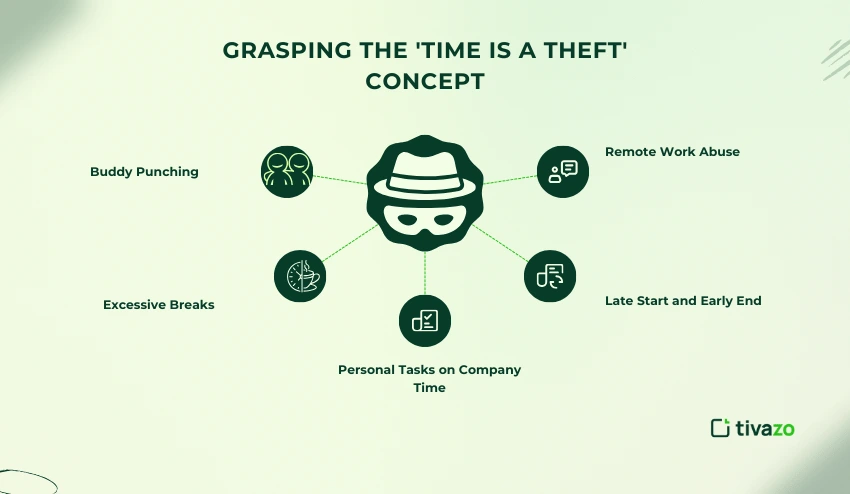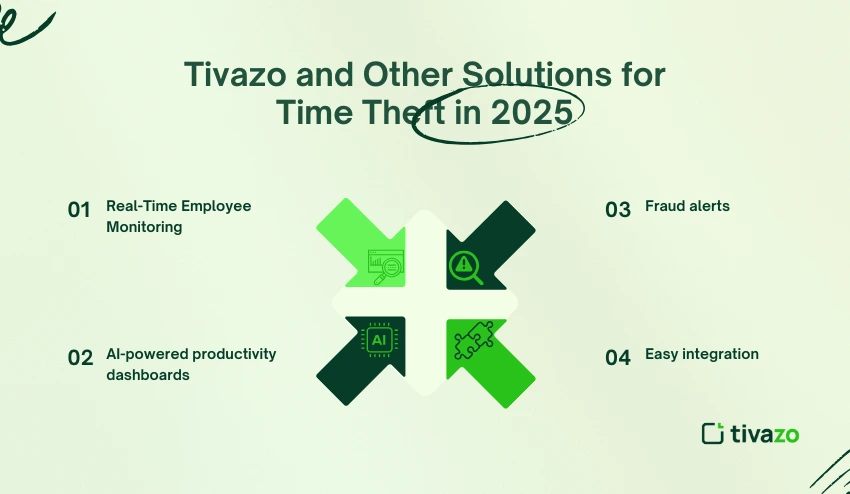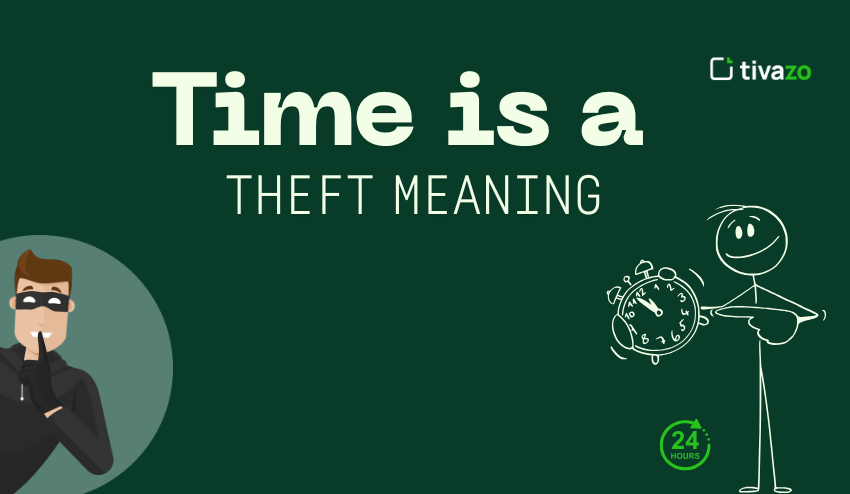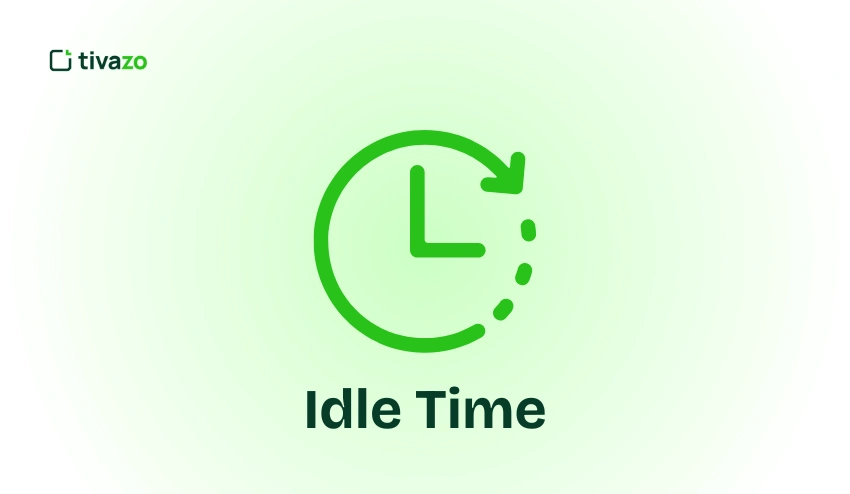In 2025, the concept of time is a theft meaning perfectly summarizes one of the largest unknown threats to any business- time theft. Employees being paid for hours not worked can cost organizations around the world billions of dollars. This impacts not just revenue; lost time can affect how productive your team is, lower morale, and reduce trust at work. Time theft can come in many forms, whether it’s buddy punching, longer breaks, or working remotely and just not working.
Unfortunately, time theft is much more common than you realize. In this blog post, we will look at the time is a theft, study the real-life impacts, ways to prevent it, discuss legal risks, and talk about modern solutions like Tivazo to stop a silent epidemic of stolen time and increase accountability and efficiency.
Key Highlights:
- Grasping the ‘Time Is a Theft’ Concept
- Typical Illustrations Of Time Theft
- Why “Time Is a Theft” Harms Businesses in 2025
- How to Discover Employee Time Theft in 2025
- How to Prevent Time Theft in 2025
- Tivazo and Other Solutions for Time Theft in 2025
- Legal Implications of Time Theft in 2025
Grasping the ‘Time Is a Theft’ Concept
The literal time is a theft meaning underscores the fact that “time” can be stolen when employees are paid for hours they have not completed work. In 2025, that typically means hybrid workers who are logging hours while getting distracted or not present at work. To be more illustrative, consider how the time is a theft meaning manifests in real-life situations:
- Buddy Punching – Commonly known as having someone else clock you in or out.
- Excessive Breaks – Taking excessive lunches or personal breaks.
- Personal Tasks on Company Time – Using social media, online shopping, and personal calls.
- Remote Work Abuse – Logging hours but not working.
- Late Start and Early End – Employees who arrive late or leave early but report full hours.
These are examples that make time is a theft meaning important to organizations because it not only loses money but also loses potential and trust.

Typical Illustrations Of Time Theft
| Type of time theft | Definition |
| Timesheet Padding | Adding time not worked to time logs |
| Buddy Punching | One employee punches in/out for another |
| Long or Unauthorized Breaks | Students exceed the allowed break time |
| Personal Activities at Work | Engaging in personal activities at work, such as social media, online shopping, and streaming |
| Remote Work Distractions | Claiming hours as worked while engaging in personal tasks |
This illustrates how time is a theft meaning translates to everyday reality in the workplace in 2025. Each of the examples in the table illustrates the significance of even minor instances of lost work time, as they can add up to a very large cost in wasted labor costs for a business. Timesheet padding for, let’s say, half an hour may not seem like much, but across multiple teams, it can equate to thousands in wasted labor costs.
Remote work distractions are one of the growing challenges across many organizations after the pandemic. Knowing these patterns is what allows organisations to understand how time is a theft, meaning is being reflected in action at work, and why a potential loss of form of work must be corrected with appropriate policies, monitoring systems, and tools that can help, like Tivazo, to restore balance and accountability.
Why “Time Is a Theft” Harms Businesses in 2025
Time is a theft meaning it has direct implications in terms of serious financial, operational, and cultural costs for businesses in 2025.
- Businesses lose billions each year around the world as a result of time theft.
- Each employee may use at least 4+ hours a week for theft of time.
- Even 10 minutes a day adds up to more than 40 hours a year per employee!
- When a few select employees see that they can steal some form of paid hours and feel that it is acceptable behavior, the larger team’s morale is negatively affected.
- Productivity reduces with the de facto implementation of variables as a result of the loss of team time, pushing timelines known as project management.
- Business profit typically falls as hidden costs arise from time theft related to missed project work or overtime, which sometimes results in an all too common overtime expense that grows exponentially.
- Time is a theft meaning also has indirect implications when clients’ reasonable trust determines action and response when managers begin to pay attention. Timelines slip or quality suffers, ultimately harming the bottom line, or litigation if there is an accident with time theft.
- Understanding the real implications of time is a theft meaning for employees, and finding your systems and practices that would enable them to make time theft reflexively. Leaving the organization open to secondary time lapses due to growth or litigation.
- Understanding that time is a theft meaning it works for managers to build monitoring, reporting, and accountability systems with transparency. Protecting resources by way of a within-business participant strategy and controlling growth.
- At the same time, businesses in 2025 who understand the real implications of time being a theft can take active steps to mitigate all possible losses from time theft rationally and as fast as possible to rebuild a workforce of trust, to become a productive workforce.
How to Discover Employee Time Theft in 2025
Understanding the time is a theft meaning is only the beginning. Finding it requires thorough practical tools and observations.
- Compare clocked hours to productivity to uncover discrepancies between reported hours and actual work.
- Utilize an AI program monitoring to identify outliers like repeated buddy punching, idle times, and excessive breaks.
- Audit time cards against something tangible, like system activity, or finished project, or output.
- Trends in repeated idle time are also telling, especially during “productive” time or remote shifts.
- Conduct random checks and spot audits to show the employee that there is an accountability system.
- Encourage your organization to report peers or establish an early-feedback mechanism that won’t catch everyone’s time theft, but may identify time theft that wasn’t previously discovered.
If these methods are applied consistently, organizations can experience the real time is a theft meaning as well as mitigate financial and productivity losses in 2025.

How to Prevent Time Theft in 2025
Preventing time theft from occurring in your workplace is critical. After all, the old saying, “time is money,” is also true in the meaning that time is a theft meaning. Therefore, you will want to be proactive in prevention. Once you understand the time is a theft meaning, you can take steps as a company to create and implement policies and practices that protect productivity and revenue.
Best Practices:
- Use of time tracking software can allow employers to have an accurate record of hours worked and lessen the chances of padding hours or “buddy punching.”
- Create attendance & break policies so that there are clear expectations and boundaries for workers regarding breaks and clock-in/out.
- Implement GPS or biometric verification that ensures the employee is clocking in and out, especially with workforces of hybrid or remote employees.
- Educate employees about your policies through training that describes the consequences of theft of time and the expectation for employees to be responsible for the outcome.
Tivazo and Other Solutions for Time Theft in 2025
In 2025, one of the best ways to address the time is a theft meaning is through the use of modern time-tracking platforms. Tivazo is an excellent option and is a leader in addressing the challenges of time theft accurately and effectively.
Features in 2025:
- Real-time employee monitoring with GPS tracking.
- AI-powered productivity dashboards to review worker patterns and determine where losses are happening.
- Fraud alerts (for buddy punching/hours worked idling).
- Easy integration, more importantly, integrations where we pay workers and report on work.

Other time-tracking software
Besides, Tivazo will help reduce the time spent a theft meaning:
- Toggl Track: Makes tracking hours simple for teams in the office and remotely, complete with reporting.
- Clockify: Has free and premium versions to monitor work hours and productivity numbers.
- Hubstaff: Will track GPS, activity level, and produce automatic time-sheets, and reduce time theft.
- TSheets (by QuickBooks): Tracks hours begin and end through geofencing, automates clock-in/out times, and integrates well for payroll.
- By taking full advantage of these tools, the business can reduce the time spent a theft, meaning it, calculate hidden losses, and keep an accurate record of the hours employees worked in 2025.
- Review time logs with audits to get a sense of when the opportunity of time theft or abuse occurred.
- Establishing a culture of honesty and responsibility will completely change the meaning of “time is a theft meaning” as this will affect the business overall,n ot just one employee.
Using these approaches can benefit any organization by limiting the risk of time theft in 2025 and providing fairness and efficiency for all.
Legal Implications of Time Theft in 2025
Yes, the time is a theft meaning it has important legal implications for businesses in 2025. Understanding these potential legal implications can help organizations act reasonably and protect their interests.
Legal Concerns:
- Contract Breach: In most instances, time theft is treated as a breach of contract concerning the employee’s contract of employment, not as criminal activity.
- Repay & Discipline: Employees can pay back the hours stolen, and employers can discipline through reprimands, warnings, or termination when the employee has engaged in theft of time.
- Felony Fraud: If the conduct involves a pattern of fraud to steal larger amounts, such as more than $500. The employee could also be prosecuted for felony fraud.
- Compliance Related to Employee Rights: With the 2025 labor laws, labor organizations are more likely to investigate and protect the rights of their employees Investigations and Audits.
- Documentation and Evidence: Good record keeping, timesheets, and data monitoring can help employers close instances of theft or time theft.
- Policies: Having clear policies that are communicated to employees allows the issues surrounding time theft to be dealt with consistently from the outset and also helps narrow the scope of disputes and reminds employees of the consequences of time theft.
- Integration with business technology: Using business integration products like Tivazo provides business owners with a highly accurate method to track employees‘ time and work, as well as reduce disputes and maintain legal compliance.
This is how businesses can deal with the time is a theft meaning reasonably, while trying to lessen financial liability and legal implications in 2025.

Conclusion
Inclusive to being late to work, taking long breaks, and extended time by their coworkers outside of employment time, the time is a theft meaning or a crime, meaning in 2025 it is a larger issue in organizations with the rise of remote work, flexible work schedules, and digital distractions, making it difficult to monitor hourly labor.
Understanding the time is a crime meaning can help your organization recognize behaviors like buddy punching, falsifying their stamped timesheets, or customers multitasking long enough for it to be a waste of work time outside of organizational time.
Employing robust time-tracking tools like Tivazo, taking action against clock-related infractions through consistent and clear policy enforcement, and random audits for your organization will minimize the time spent on clock-related crime in the workplace.
The time is a theft meaning needs to be recognized as not just protecting revenue, but accountability, fairness, and a culture of trust in the organization.




